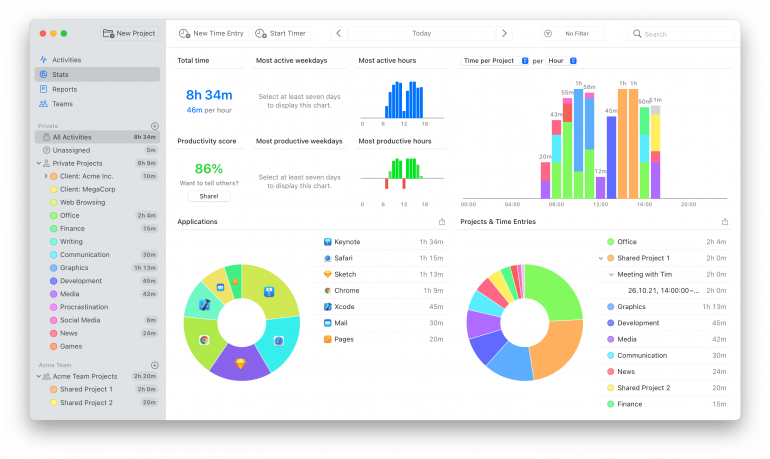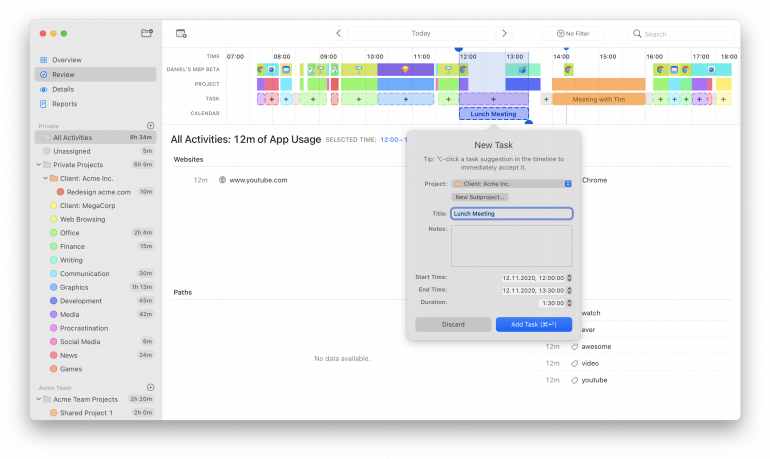Setting Work Boundaries: 7 Steps for Better Work Satisfaction
 Image: CoWomen
Image: CoWomen
Boundaries refer to the limits we set for ourselves. They’re a line in the sand that indicates we’re prepared to go so far and no further. Boundaries are important in all aspects of our life, including at work. Work boundaries help us to stay focused and productive, establish work-life balance, maintain constructive working relationships, boost work satisfaction, and prevent burnout.
If you battle to communicate your needs at work, if the lines between your professional and personal lives regularly blur, or if you constantly feel overwhelmed or exhausted, it’s worth paying attention to the boundaries you have in place. Are they strong enough? Do you need to renegotiate or reinforce them? Examining your boundaries critically can help you stay on track mentally, emotionally and physically.
Here, we explore the different types of boundaries at work. And we offer seven steps that will help you keep good boundaries in place — and reap the rewards.
Table of Contents
What are Work Boundaries?
Work boundaries are the healthy professional practices you set for yourself. They refer to what you need to keep your working life secure, productive, fulfilling and balanced.
In some instances, boundaries can be laid out by companies, too. Many businesses stipulate the working hours that they expect their employees to be available, for example. Or they enforce one no-meeting day per week, where employees are encouraged to focus on deep work. Policies that protect employees from discrimination, harassment and bullying are a critical workplace boundary.
Other boundaries, however, tend to be more personal, and what applies to you might not apply to your colleagues. You might feel uncomfortable hugging people at work, for example, while someone else could be open to it. Or you might choose to take your lunch break every day, even if others don’t, because you know work breaks are good for you. Within reason, you should feel comfortable to impose the boundaries that matter to you.
 Image: Cathryn Lavery
Image: Cathryn Lavery
What are the Different Types of Work Boundaries?
Boundaries take several forms. In working environments, they tend to be divided into four primary categories: time, mental, emotional and physical boundaries. Let’s take a look.
Time boundaries
These boundaries specify when you’re expected to work and when it’s acceptable to log off. Today, many companies don’t impose limits in this regard, and don’t specify whether employees should respond to emails after hours or not. In these instances, it’s up to you to put this boundary in place.
Studies have shown the negative effects of emails, texts and Slack messages pinging and buzzing after work. These disruptions can lead to additional stress, negative work rumination and insomnia. Although it can be difficult, you’re within your rights to refuse to work after hours. Your mental health and your personal relationships depend on it.
Mental boundaries
Mental boundaries are often tied to time boundaries. They can refer to the rest and relaxation people need to stay alert, creative and satisfied. Many companies allow for mental boundaries by offering compassionate leave or mental health days.
Perhaps you need to have certain limits in place in order to work well. This might include dedicated time for deep work, where you don’t answer emails or phone calls. Or it might constitute an hour out of the office to go to therapy every week. If some of the mental boundaries you want to put in place infringe on your working hours, speak to your manager or HR team. They should make allowances for your mental health — it’s in their interest.
Emotional boundaries
Emotional boundaries refer to how people engage with each other on an emotional level. This behavior can have an important influence on company culture. Healthy emotional boundaries are usually in place in contexts where everyone is supported and treated with respect. Emotional boundaries are visibly absent in environments where managers and colleagues belittle those around them, or treat them with aggression.
Being conscious of how you want to be treated, both privately and in front of coworkers, is important here. Communication is also key. Tell your managers and colleagues how you want to be spoken to or how you would like to receive feedback. Emotional boundaries require others to be sensitive to your feelings, and you to be sensitive to theirs, too.
 Image: LinkedIn Sales Solutions
Image: LinkedIn Sales Solutions
Physical boundaries
These boundaries prescribe how people are permitted to engage with each other physically. It can refer to both how we touch and talk to each other. Again, your company should have ways of addressing serious issues. There should be mechanisms in place to deal with anything that constitutes physical or sexual harassment or assault.
On a personal level, you might choose to ask your colleagues not to interfere with your workspace. Or not to enter your office if you’re not present. Sharing your new pronouns at work is an important physical and emotional boundary to put in place.
Why Work Boundaries are Important
Setting work boundaries helps us to protect us from unacceptable behavior, preserve our energy, and live according to our values. It’s an important part of self-care.
Strong work boundaries help to:
- Maintain productivity: No one can operate at heightened levels of productivity all the time. In fact, productivity requires rest. By putting boundaries in place, you delineate times and spaces where you can relax and recharge. Doing so helps you to be focused, creative and innovative when you get back to work.
- Eliminate toxic productivity: There’s beneficial productivity and then there’s toxic productivity. This occurs when you become so focused on being productive that you start neglecting your well-being. Symptoms include being obsessed with work, feeling exhausted, and regularly making mistakes. If you want to produce good work that makes you feel fulfilled, this approach is totally counterproductive.
- Manage your time effectively: Do you have times of the day when you work better than others? Using a time tracking tool like Timing can help you see when you’re most productive. Setting boundaries to ensure you’re not disturbed during this time can help you produce your best work.
- Prevent overwork and burnout: Telling your manager that you don’t have capacity for more work is a good example of a boundary. As is informing them that your child has been sick and you need an extension on a deadline. Boundaries help to prevent us from unmanageable workloads, which can lead to anxiety, depression and burnout.
- Establish strong professional and personal relationships: Boundaries help others to know what we accept in our relationships. This is as important in our working lives as it is in our personal lives. With strong boundaries in place, we’re more likely to collaborate well with others so that we can achieve our shared goals.
- Ensure work-life balance: Since the pandemic, studies show that work-life balance has become more important to employees than their salary. This is a fascinating reversal from pre-pandemic research, when money was a greater driver. Maintaining a balance between our working lives and our private lives makes us happier, healthier, and more engaged in our work. Putting boundaries in place is one of the best ways to ensure this balance.
- Limit quiet quitting and attrition: A phenomenon that’s gained a lot of publicity in recent years, quiet quitting refers to people checking out at work and only doing the bare minimum of what’s expected of them. It can be a disheartening and frustrating experience, but putting boundaries in place can help. Rather than quitting (quietly or actively), try opening up what’s working and what isn’t. Set limits around the areas that make you unhappy, and your working life could improve.
 Image: Katie Barrett
Image: Katie Barrett
What are Examples of Work Boundaries?
To some extent, your boundaries might depend on how you structure your work. Freelancers might have different boundaries to remote workers or full-time employees. However, there are some common, and widely applicable, examples of healthy boundaries at work:
- You refuse to work after hours or on weekends
- You take breaks throughout the day
- You leave your work equipment, such as your laptop, at the office
- If you’re a remote worker who works asynchronously, you don’t accept calls at unreasonable times
- You take sick leave when you need it and schedule holidays
- You decline meetings you’re asked to attend while you’re on holiday
- You choose how much personal information you want to share at the workplace
- If you work directly with others, you avoid office gossip
- You speak up if you’re uncomfortable with how a coworker or client treats you
- If you’re a freelancer, you set the rate you work for and typically decline work that pays less
Boundaries can be negotiable. Sometimes it might be necessary to work after hours, for example. Provided you’re doing so on your own terms, you might choose to bend some of your boundaries occasionally.
7 Tips on Setting and Maintaining Boundaries for Better Work Satisfaction
OK, so how do you set and maintain good work boundaries? This list of seven tips is designed to boost your job satisfaction by helping you put meaningful limits in place.
1. Identify what matters to you
Everyone’s boundaries are different, which means you can’t simply adopt someone else’s as your own. Your boundaries have to align with your own beliefs, values and goals — and only you know what those are. Do you want to spend more time with your family? Focus on your health by meditating or exercising? Advance your career sustainably and avoid burnout?
Take the time to explore these priorities and the boundaries you can put in place to achieve them. Then, give yourself permission to set these boundaries. Check in with how you feel during this process, and make any adjustments that might be necessary.
2. Communicate transparently
In most instances, people need to know about the boundaries you’ve put in place. Inform your colleagues that you’d prefer not to attend meetings on Fridays, or that you’re only available on weekends in an emergency. This not only helps your colleagues to plan accordingly, but also helps you to stay accountable.
If necessary, inform your management team of your boundaries and explain why they’re important to you. Provided your boundaries are reasonable, most healthy working environments shouldn’t see them as a problem.
3. Track your time
Knowing how you’re spending your time and scheduling it properly is critical in setting and maintaining work boundaries. An automatic time tracking app, like Timing, can help you here.
Timing’s Stats tab, for example, lets you know what hours you’ve worked, and which have been the most productive. If your report regularly indicates that you work until 9 or 10pm, but these are slow, sluggish periods for you, it might be a good idea to set a boundary. Rather eliminate time sinks during your productive hours and work hard when you’re feeling fresh and alert. That way, you can free up your evenings for your own personal creative projects.

Timing’s calendar function can help you stay accountable to the time boundaries you set for yourself. First schedule time for a specific purpose in your Mac calendar app. Maybe you want to attend your child’s track practice every Tuesday afternoon at 4pm. Timing will integrate this into your timeline, and will indicate whether you’ve adhered to it. There will be no computer activity if you’ve stayed away from your machine for an hour or two.
Remember that Timing’s timeline shows all your computer usage over the course of an entire day. This makes it easy to spot when you “just quickly” worked outside working hours — and when this work escalated and took longer than anticipated.
 4. Learn how to ask for help and to delegate
4. Learn how to ask for help and to delegate
Be conscious of what you’ve been hired to do, and what’s manageable within a reasonable time frame. If you’re being asked to go beyond these limits — by taking on additional tasks or doing the work of three people — it’s probably time to put a boundary in place. Raise your hand, speak to a manager, and ask for some support.
If these structures aren’t in place, and you’re expected to work no matter how much pressure you’re under, your work environment might be toxic. Pay close attention here, and examine your working life critically. It might be time for a change.
5. Practice saying no
This one’s a tricky one, especially if you’re a bit of a people pleaser, or you’re trying to prove your value at work. Healthy working environments, however, will respect you for saying no and putting boundaries in place.
Having some clear, polite and professional phrases in your arsenal can help you. Try responses like: “I’m sorry, I’m swamped at the moment, but I can lend a hand next week.” Or, “Unfortunately, that’s not part of my role.” Or, “I can’t work tonight, I spend time with my family in the evenings.”
6. Respect other people’s boundaries
Prioritizing boundaries is a collective responsibility. Respecting other people’s boundaries encourages them to respect your own. And if everyone works hard to do this, it creates a culture where people feel free to be honest and authentic. This also makes boundaries easier to maintain — not just for you, but for your colleagues, too.
7. Remember that boundaries evolve over time
Your boundaries aren’t cast in stone. You’re free to renegotiate them. If you feel like a former boundary was too stringent or restrictive, you can relax it. By the same token, if you’ve let another boundary slip, you might need to reinforce it.
Boundaries also evolve as our lives change. Starting a new business, accepting a major promotion, or having a child will all affect how you manage your time and workload. Your boundaries will likely need to shift accordingly.
The Bottom Line on Work Boundaries
Setting boundaries at work is one of the most important ways to ensure your professional health and happiness. It’s not always easy, and requires a bit of practice, but the benefits can be significant.
If you need a hand getting started, start by making sure you have the right digital tools available to help you. Download Timing’s free 30-day trial to start tracking your hours. With this information, you’ll start improving your time and mental boundaries. And this could have a positive knock-on effect on your emotional and physical limits, too.
Work Boundaries: Frequently Asked Questions
What are work boundaries?
Work boundaries are the healthy professional practices you set for yourself. They refer to what you need to keep your working life secure, productive, fulfilling and balanced. Time management is an important part of this.
How do I set boundaries at work?
Set work boundaries by identifying what’s important to you, and establishing limits to help you achieve these goals. Communicate with those around you, and track your time with an automatic time tracking app.
What are some work examples for boundaries?
Sticking to your work hours, taking breaks, and going on holiday are all examples of good work boundaries. Evaluate your own values and goals before setting the boundaries that feel right for you.
